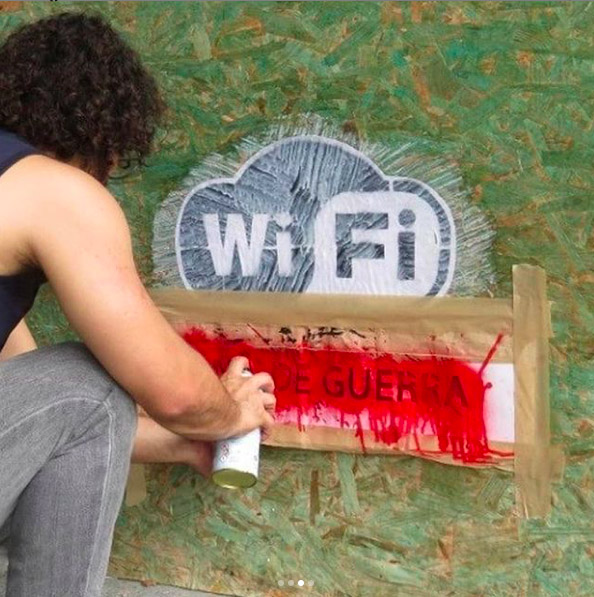Während die Museen kurz vor der erneuten Schließung stehen, bleibt die Straße für alle offen. Dies gilt insbesondere für Brasiliens Hauptstädte. Auch die Küstenstadt Salvador de Bahia verfügt über zahlreiche Graffitikünstler. Ihre Zeichen, Codes, Texte und Bilder sprühen die urbanen Aktivisten sowohl auf die teils leerstehenden Holzhäuser der historischen Altstadt als auch auf die moderne Betonarchitektur der autoreichen Neustadt. Jovan Mattos, Jahrgang’ 83, gehört zur Szene. Wem gehört die Stadt?, fragen eindringlich seine Graffitis, die er mit GIFs kombiniert. Die Digitalisierung und Überwachung des urbanen Raumes findet gerade weltweit statt. In Brasilien wird das Thema Sicherheit in den Stadtzentren immer weiter vorangetrieben. Jovan Mattos Graffitis beschäftigen sich mit diesen Schnittstellen, der Mensch im digitalen Zeitalter, zwischen Kontrolle, Überwachung und Vereinsamung sowie der Sehnsucht nach Kommunikation, Austausch und einem direkten Miteinander – Voraussetzung einer jeden städtischen Kultur. Ein Thema, das uns also alle angeht.
While the museums are about to close again, the street remains open to all. The Brazilian coastal city of Salvador de Bahia has numerous graffiti artists. The are urban activists spray their signs, codes, texts and images on the partly empty wooden houses of the historic old town as well as on the modern concrete architecture that characterises the car-rich new town. Jovan Mattos, born in ’83, belongs to the scene. Who owns the city?, his graffiti ask us, which he combines with gifs. The digitalisation and surveillance of urban space is happening all over the world right now. In Brazil, the issue of security in city centres is being pushed further and further. Jovan Matto’s graffiti deals with the interfaces, the human being in the digital age, between control, surveillance and loneliness as well as the longing for communication, exchange and a direct togetherness – prerequisite of any urban culture. A topic that concerns us all.
Hortense: Jovan, du lebst in Salvador de Bahia, in der drittgrößten Stadt Brasiliens. Eine Stadt, deren koloniales Erbe noch überall spürbar ist. Es ist eine charmante Stadt, reich an Kulturgeschichte, die aber von vielen Spannungen gekennzeichnet ist. Salvador verfügt zugleich über eine rege Szene an jungen Künstlern, Gestaltern, Performern. Ihr sorgt für frischen Wind im Kulturbetrieb und ihr prägt das Stadtbild nachhaltig durch eure Interventionen und Räume mit. Der urbane Raum ist auch Thema deiner Doktorarbeit, was erforscht du? / Urban space is currently the subject of your doctoral thesis, what are you researching?
Jovan: I develop a poetics about the interface for the realisation of urban art. For this, I play visually with familiar symbols of contemporary communication, such as a computer keyboard or a mobile phone. Equipped with a black and white stencil, I walk through the city – always with the intention of creating poetic interference via the interface…

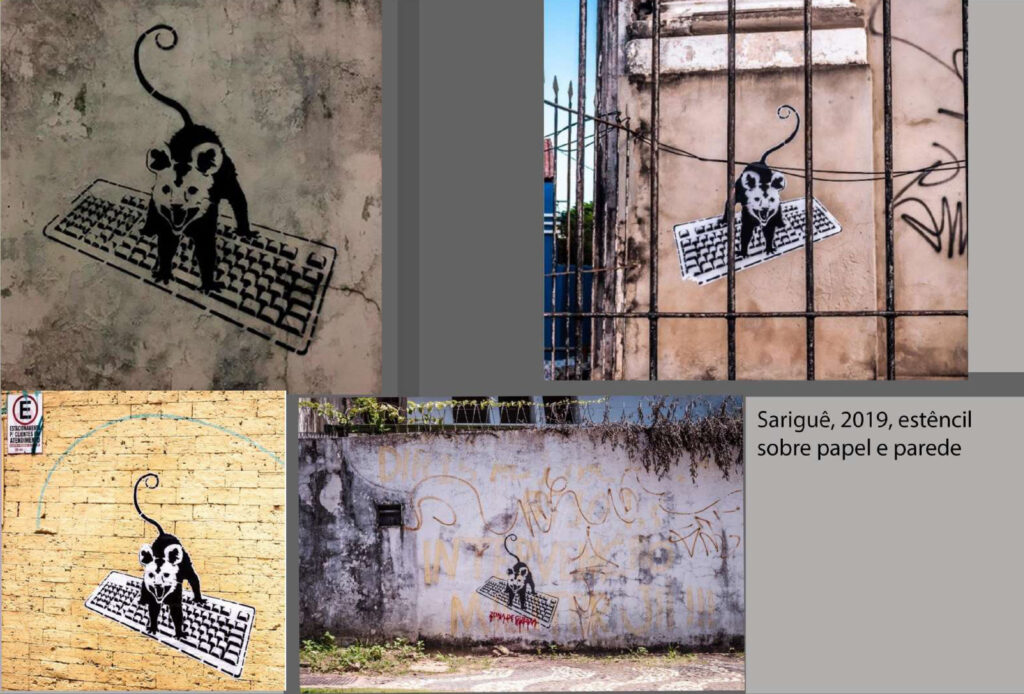
Another interface is created by using the QR code to display GIFs and videos on the street. My aim is to explore what can be human, sublime or subjective in the in-between space to create narratives in what is conceived as this space and time of passages to create an interface between the urban space and the virtual space.
Hortense: Mich würde interessieren, wie Passanten auf den bisweilen gefahrvollen Straßen, auf deine Graffitis und Barcodes reagieren? Gehen sie auf deine Bilder zu?/ How do people deal with the graffiti and barcodes? How do they approach the images?
Jovan: I actually follow the works, especially those on the more common routes that I take. And so I observed once a family taking a photo of themselves next to my picture „conversa01“. They took a photo with their mobile phone but didn’t decipher the code. The staging in the code carries a certain hermetism because of this lack of culture of decoding.
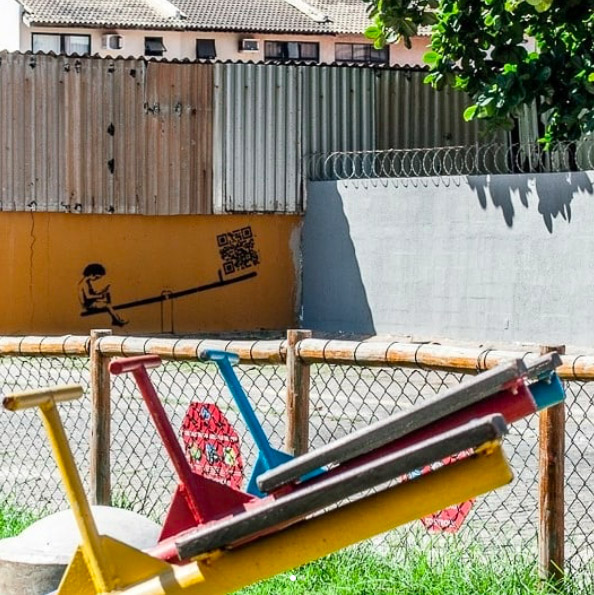
There is another interesting aspect of „conversa01“: I chose a small abandoned playground that was overgrown with tall grass and bushes. After my intervention, the park and the playground was suddenly taken care of. Maybe because I did something obvious, they cared about the place again, maybe also because the work tells a bit about the digital world in which children live and how at the same time parks are abandoned .
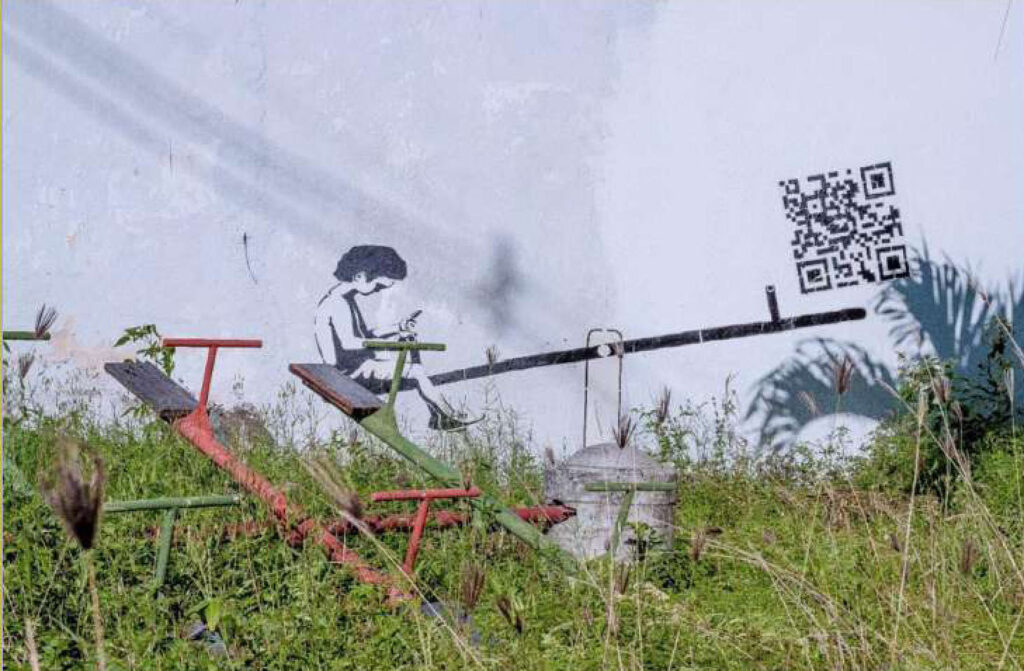
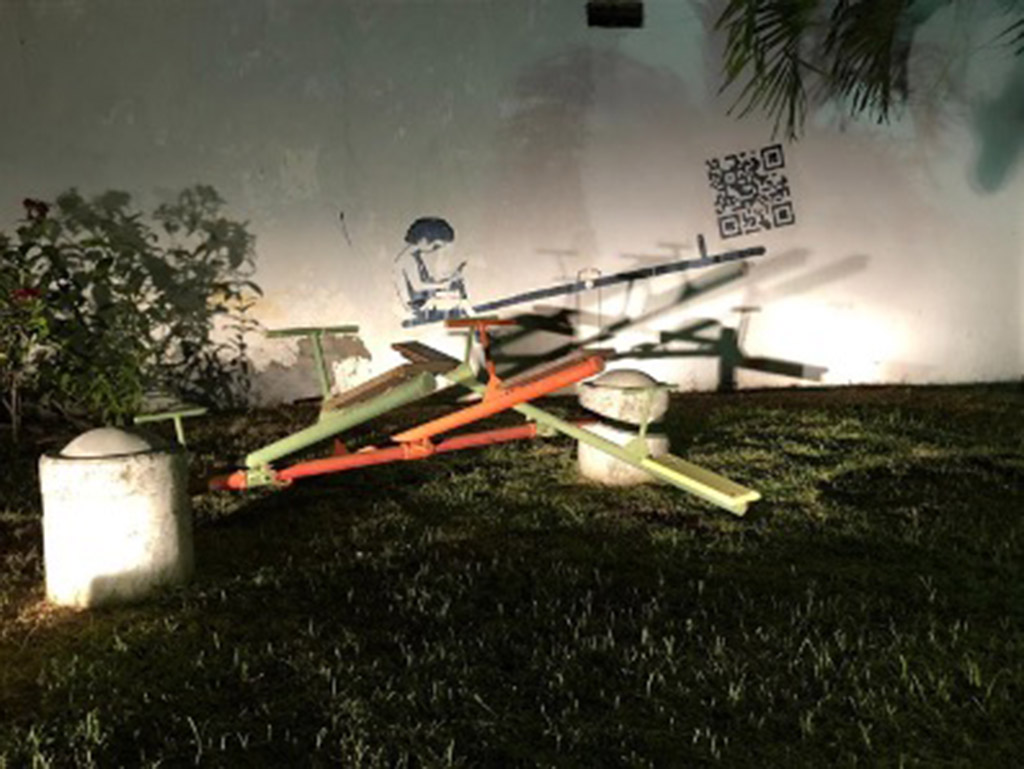
What surprised me was to see that my work was not erased during the renovation. It is a completely illegal work and it was obtained.
Hortense: Graffitis haben in Salvador eine große Akzeptanz. So gibt es etwa erfreulich viele Künstlerinnen in der Sprüherszene, du hast davon berichtet und eine habe ich dann getroffen. Hat sich der Umgang im urbanen Raum zuletzt verschärft? Deine Arbeit „dronefobia“ von 2019 verstehe ich als deutliche Kritik an der digitalen Überwachung des Stadtraums. / Has the interaction in urban areas recently become more severe?
Jovan: Salvador has been benefiting from a political fight between right and left wing, based on who builds more improvements to the city. But this changes almost nothing. Slavery and secular system of inequality have produced a structure of urban violence in which the experience of such obscurity creates a desire for some state surveillance.
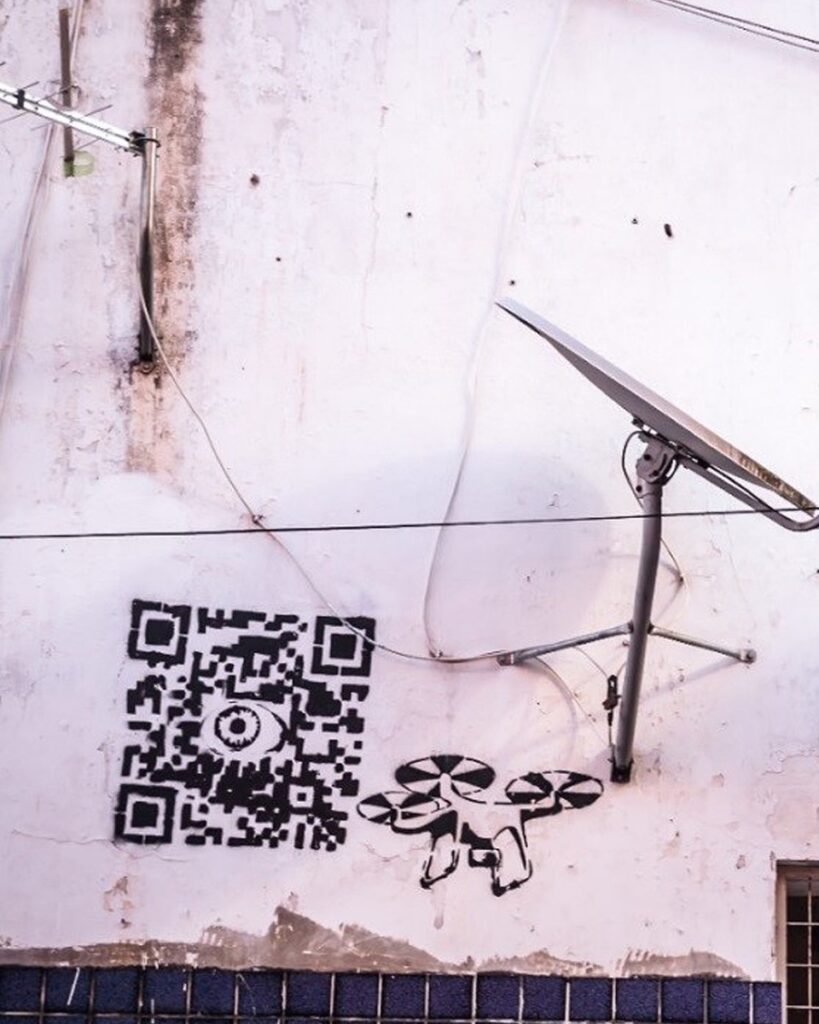
„For the urban artist, therefore, there are two challenges: the state and the law that prohibits our graphic interventions, on the other hand, a society of necessity that harasses us, sometimes violently. In this sense, the freedom of non-surveillance goes hand in hand with the possibilities of spending a night in no-man’s land. To intervene at night in the city is a political act of civil disobedience, as well as an act of courage. „
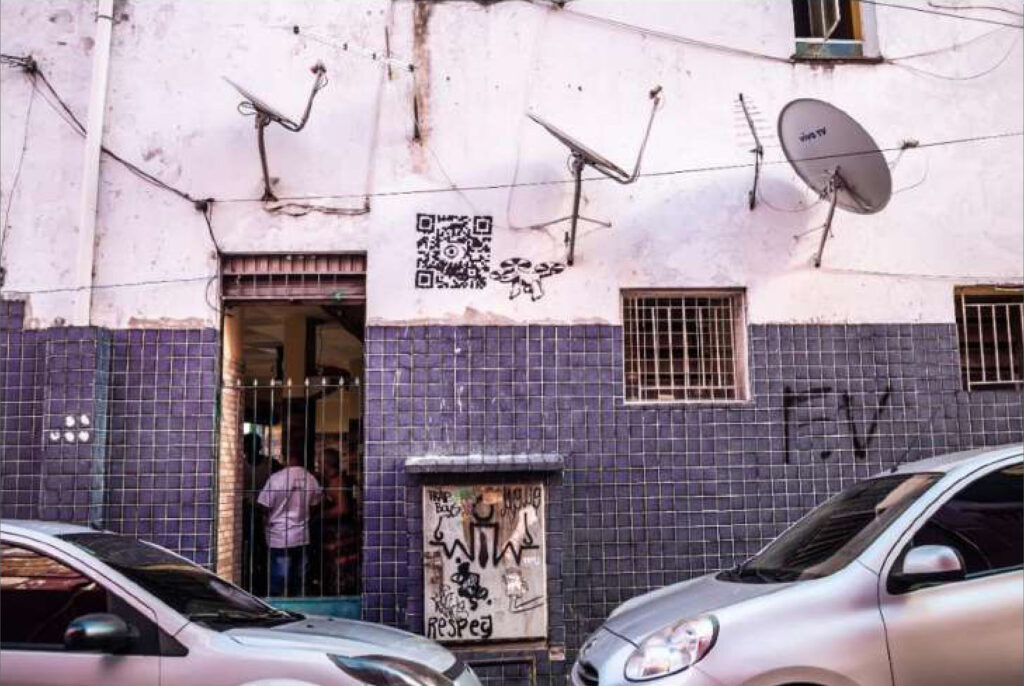
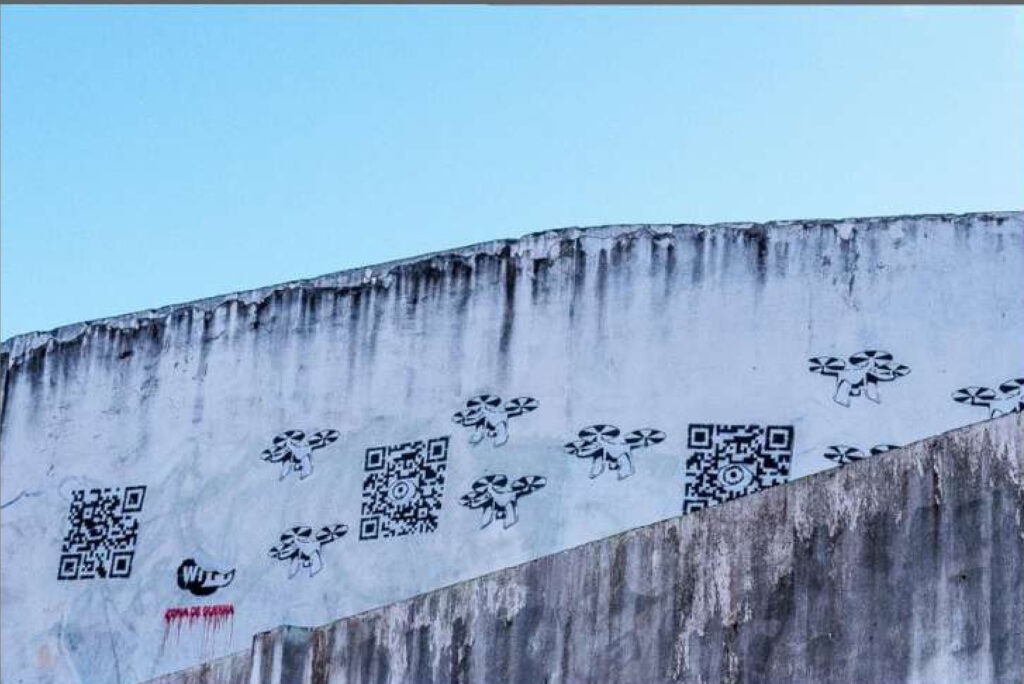
Hortense: Eine Nacht im Niemandsland, was genau meinst du damit? / A night in „no man’s land“, what exactly do you mean by that?
Jovan: What I mean is, when I moved around the city at night to intervene with art, I certainly felt a sense of freedom … but in fact the police can show up at any time, just like everywhere else. On the other hand, if we didn’t have the surveillance of the state, which can be a protection, we would be like in a kind of „no man’s land“, I mean, a territory without law.
Hortense: Weshalb existiert bis heute eine Form der Sklaverei in deinem Land? Könntest du uns das genauer erklären. / Why is that form of slavery still exist in your country today? Could you explain that to us in more detail.
Jovan: In Brazil every year 50.000 to 60.000 people are murdered. It is one of the most unequal countries in the world, with people with a lot of money, a white elite. On the other hand, most of the poor are black, the beggars are black, the prisoners are black. Many explain this reality by the fact that Brazil was the last country to end slavery. After slavery no piece of land was given to the former slaves, nor a program or historical reparation. So, what I mean is that slavery, and the way it ended, is also responsible for the existence of this structural violence in the city.
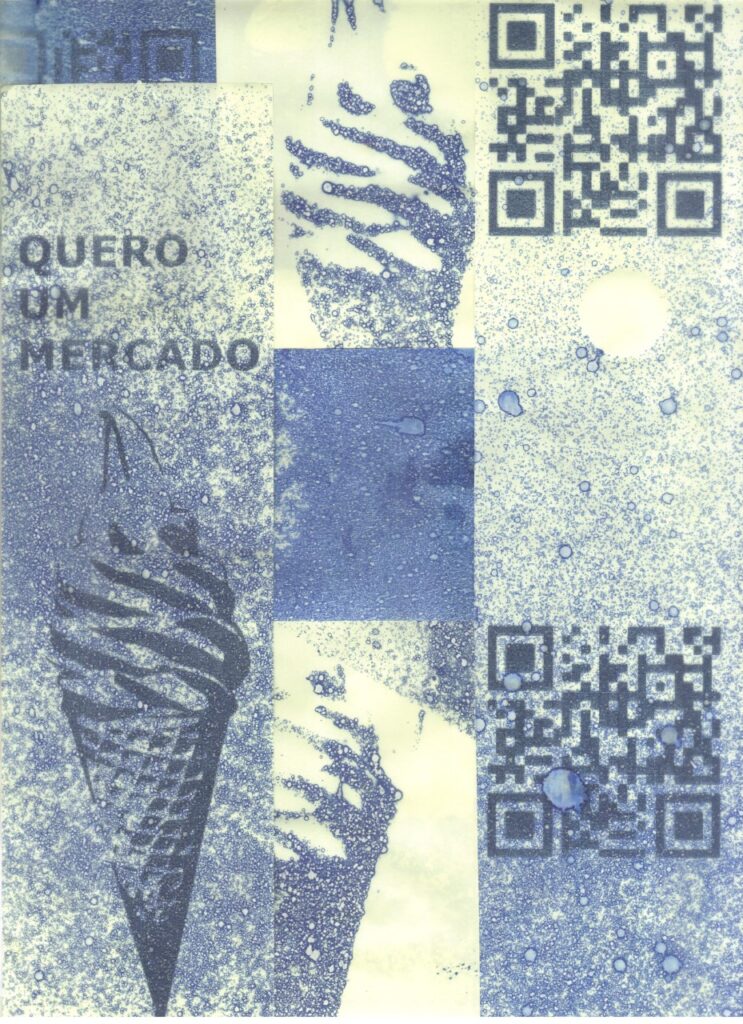
Jovan Mattos, Salvador de Bahia, 2019
Hortense: Deine Graffitis visualisieren für mich auch unsere Sehnsucht, ob groß oder klein, miteinander in Kontakt zu kommen. Für diese Sehnsucht findest du stimmige Bilder. Wie sich während des Covid-Lockdowns zeigt, führt uns der reine Austausch über digitale Medien aber in eine körperliche Isolation, womöglich in die Vereinsamung. Ist das deine Kritik als Künstler an den neuen Medien? / Is that your criticism as an artist of the new media?
Jovan: A criticism-confession! (laughs) It is true that this cyberspace encourages encounters between people, allows us to meet many people who have already passed through our lives, to maintain contacts with family and even to meet people in a reasonable way. But on the other hand, there is an affection of loneliness in this relationship with a mass of information, images, sounds and videos.
„The citizen’s room can become a solitary cave, a profile on the Internet can be an avatar or a mask to hide the body and the eye to eye. In this sense, the poetry of the interface is be based on the relation of use of the subject, its facts and subjectivities, its possibilities in this interfaced space.„
All this technocracy interests me, all the interface apparatuses, relations and technological creations, but not only through criticism, but also through celebration. This fetishistic effect that makes people hitch themselves to what “tech”, stimulates me, because it is a self-analysis, an attempt to push away the ghost of arranged identities and easy added values. For me, it’s important to balance between a technophile and a technophobe posture.
HortenseWie hat die Pandemie, Covid19, deine Arbeit verändert?/ How has the pandemic, Covid19, changed your work?
Jovan: It hasn’t changed much, I was always a little too homemade, I go out a little. In addition, this forced virtualization of everyone and everything, reinforced the idea of exploring a virtual, urban, something in the interface, an urban design or a code.
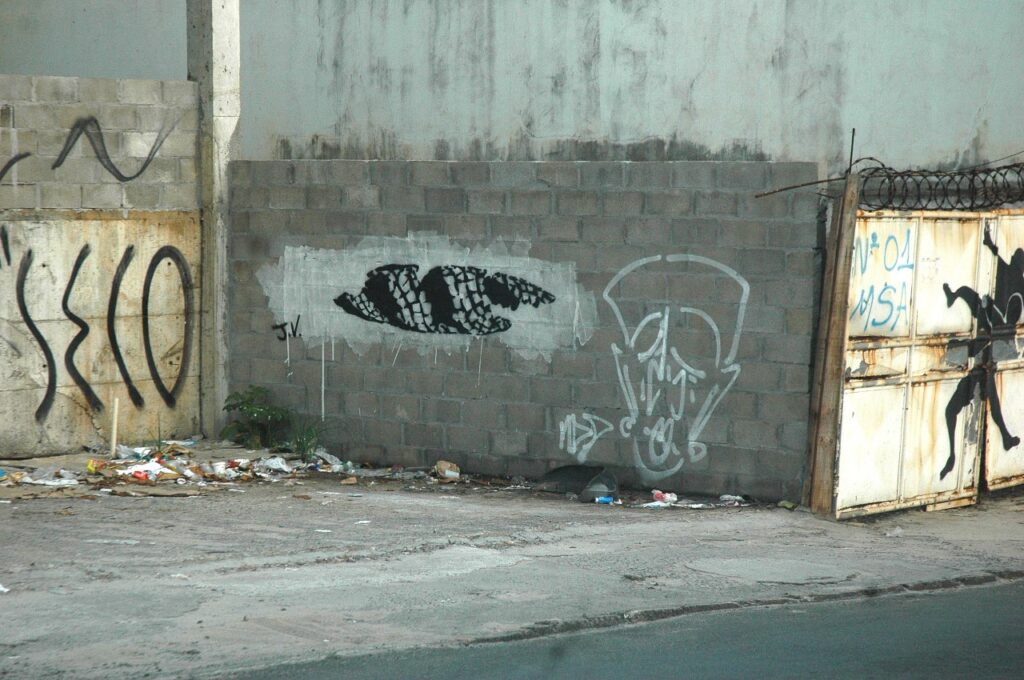
In Salvador hast du mir damals eine deiner Wandarbeiten vorgestellt. Dafür verarbeitest du die typischen Pflastersteine Salvadors. / In Salvador, you introduced me to one of your wall works where you used the typical cobblestones of Salvador for it.
Yes, I worked for a few years with Portuguese stone, this technique of creating mosaics in black and white stones for pavements, but I applied this reference to sculpture, fusing the stone with urban objects, an organic and human form in a city context. The pavement thing brought me to the urban, so I made gallery and salon art inspired by the street. This art also had a regional and local reference, like an accent. When I turned to urban stencil art, I was looking for a certain lightness of medium and a direct connection to the urban. Combining the virtual global with the physicality of the local is one of the challenges I try to work on. Today, creating is about connecting the stone with the pixel, light and dark, stone and digital, light and heavy, local and global.
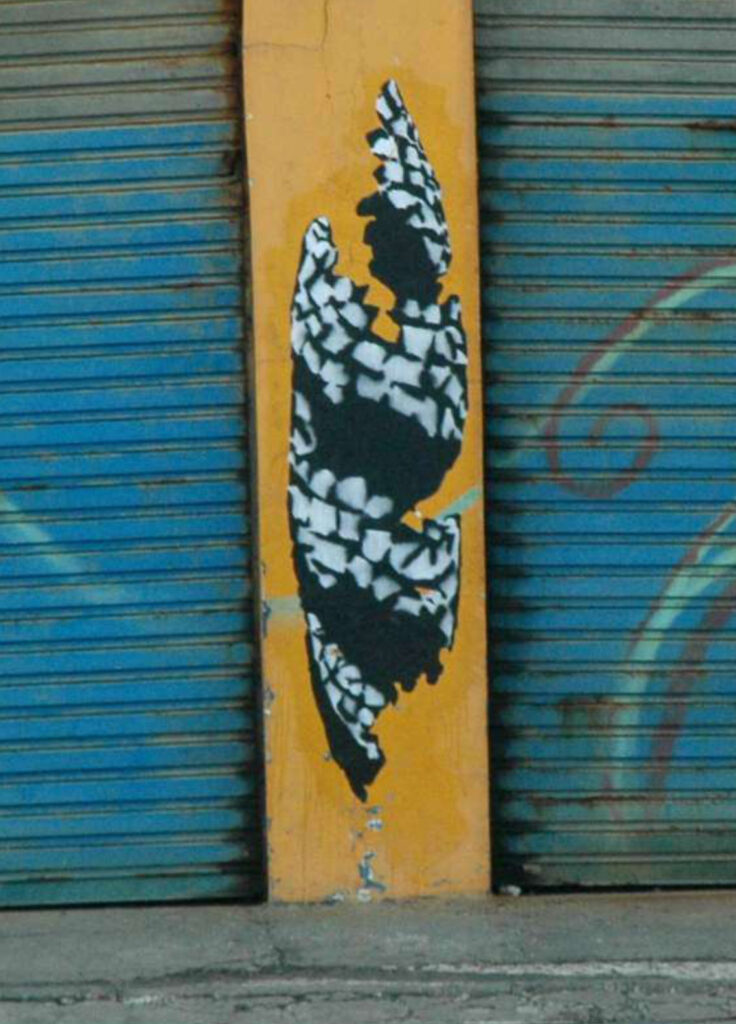
Hortense: Was könnte sich deiner Meinung nach in den Museen Brasiliens nach deren Wiedereröffnung, nach dem Lockdown, verändern? / What do you think could change in Brazil’s museums after the lockdown?
Jovan: I would like more young people to go to museums, in the same way that dance parties go today. I would like to see the market more connected to the museum or vice versa, I would like the museum to foster more culture, immateriality and performances, but at the same time, I would like the production of culture to be a less mysterious professional path.
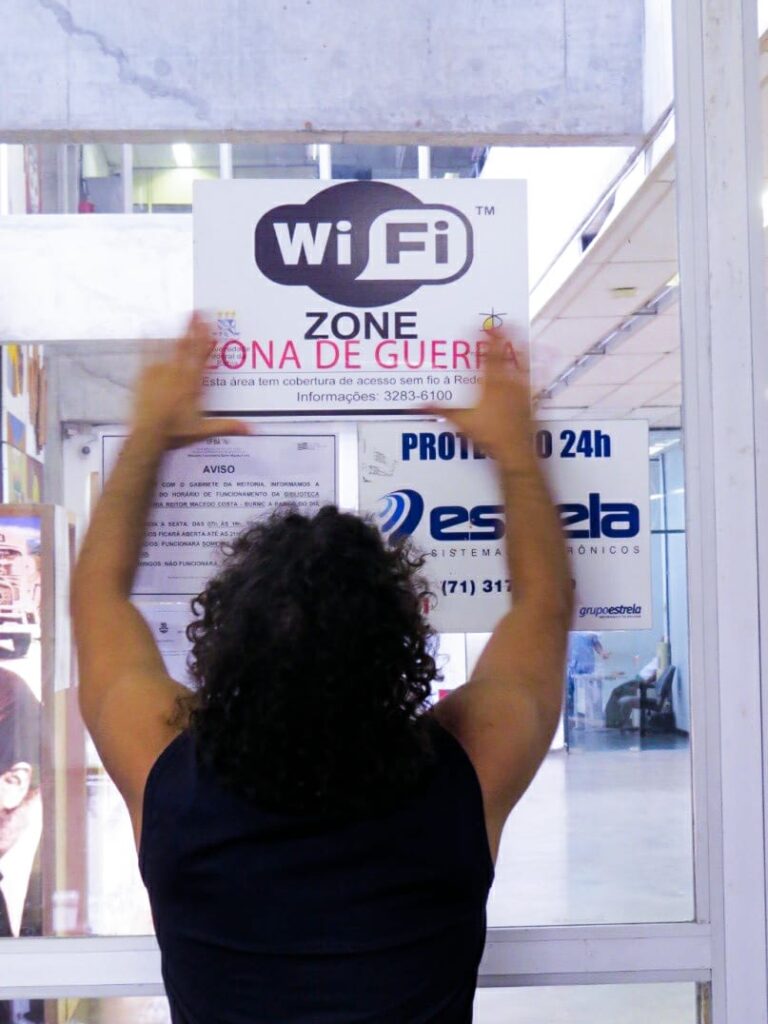
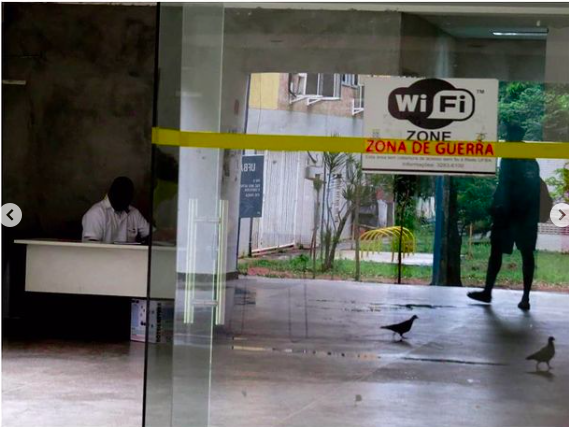
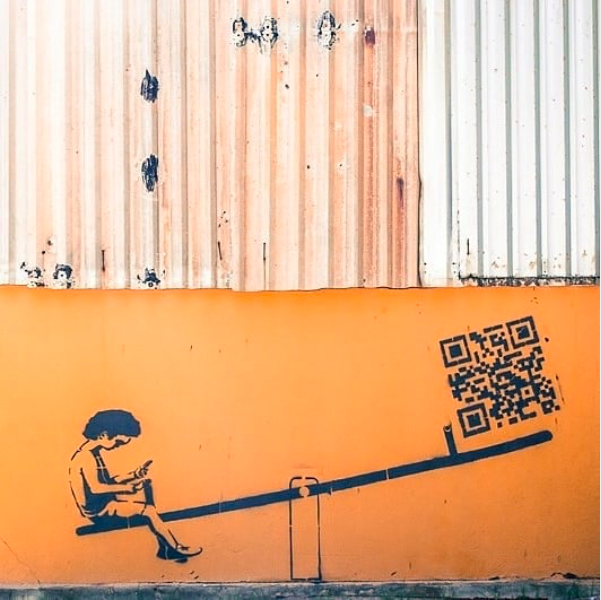
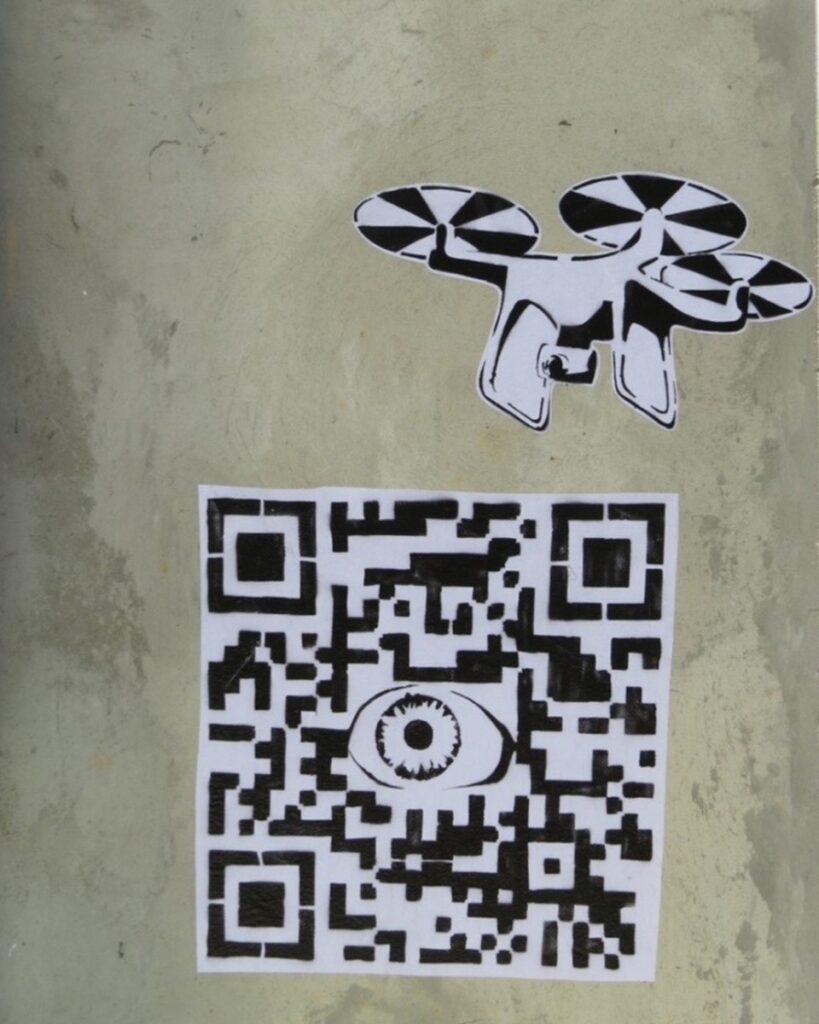
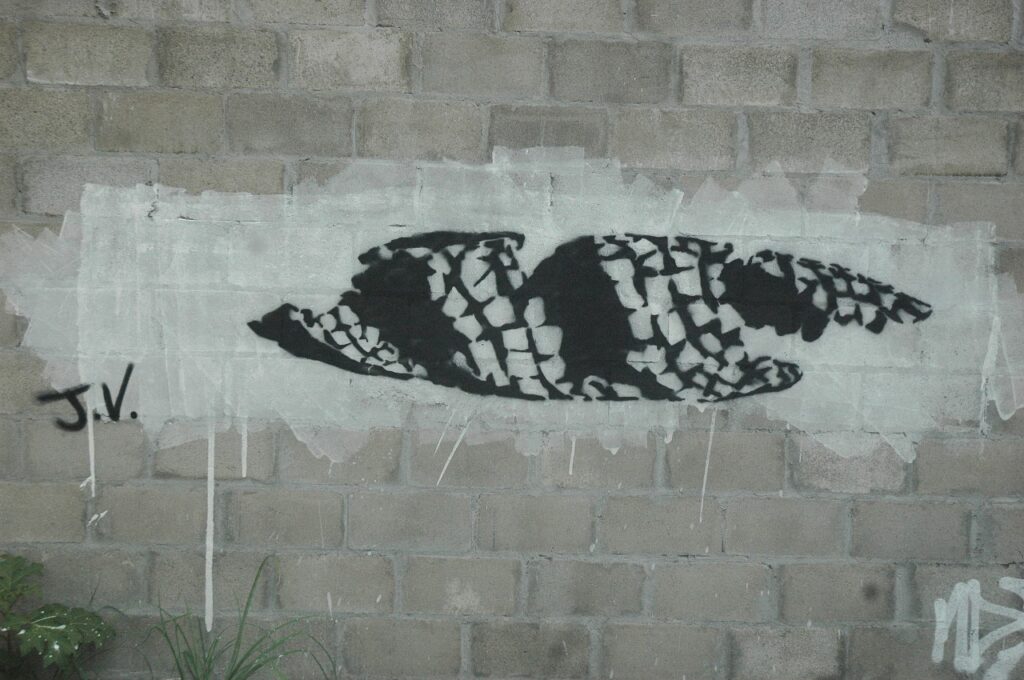
Jovan Mattos was born in 1983 in Salvador, Brazil. He entered the School of Fine Arts at UFBA (Federal University of Bahia) in 2003. He has produced performances, drawings and videos, which he continually enters in salons. He won the main prize at the 2007 Salão Regional de Artes Plásticas da Bahia in Feira de Santana with the work „Boa noite Carlos Gomes“. The sculpture was later exhibited at the MAM (Museum of Modern Art) and at the „Vila Velha“ theatre. The work was very striking in his production, bringing the Portuguese stone and the life of downtown Salvador to his poetics. In 2008 he won the Acquisition Prize at the Bienal do Recôncavo with the work „Minérios“.
He graduated in Fine Arts at UFBA in 2009. In 2010, together with professor David Iannitelli, he designed the set for the show „Mobius“ of the GDC (Contemporary Dance Group) of UFBA. Practiced painting and engraving for a few months in the atelier of the artist Edson da Luz. He did a brief technical training and spent two years working in engineering companies as a designer and modeller of industrial piping. He was invited in 2013 by the artist Vinícius S/a to participate in the artistic residence“ kulturamt“ in Frankfurt, Germany.
The experience lasted 2 months. In 2014 he won the edict of the „Visual Arts Sector“ of the State of Bahia with the exhibition „Minérios“ that counted with the participation of Edgard Oliva, Rosa bulchaft, Erivan Moraes and Umeru Bahia. Today Jovan Mattos continues to develop his research in visual arts as a master student in PPAV (Graduate Program in Visual Arts) in the School of Fine Arts (UFBA).
